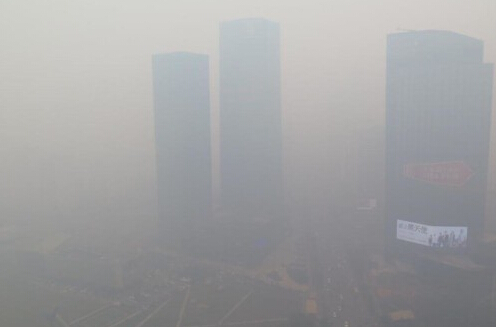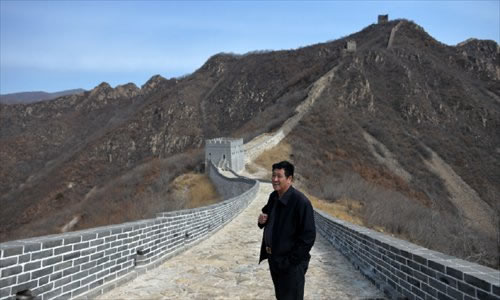
In Qinhuangdao, North China’s Hebei Province adjacent to Beijing, coalmine owner-turned conservationist Xu Guohua has rebuilt much of the wall around his native village using the money he accumulated through exploiting black gold in the two decades after China began its reform and opening-up.
秦皇岛位于河北省北部,毗邻北京,在那里环境保护者许国华已经完成了对许多破败墙体的重建修复工作。许国华曾是一名煤矿老板,他在改革开放的前二十年里做煤炭生意积累了大量财富,后来他把这些钱投入到了家乡的破败长城修复工作当中。
At the height of China’s coalmining boom, Xu owned seven mines and employed 800 people. But as China began closing smaller coalmines over environment and safety concerns, Xu shifted to other businesses.
在中国煤矿产业最繁荣的时候,许国华曾经掌管着7座煤矿,手底下有800名工人。但是后来出于对环境和安全问题的考虑,中国政府开始关闭小煤矿,徐国华也放弃了他的煤炭生意,转向其他产业以求发展。
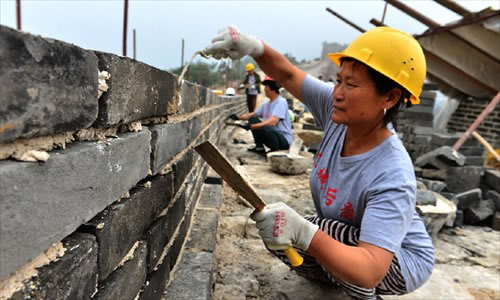
He decided to try his luck in tourism. Banchangyu village boasts 25 kilometers of Great Wall built in the Ming Dynasty (1368-1644) with 67 watch towers, however, most of the ancient military structure has beome dilapidated.
他把目光瞄准了旅游业。明长城板厂峪村段共有25公里长,其中包括67座瞭望塔。但是大多数长城墙体都已经破旧不堪,损坏严重了。
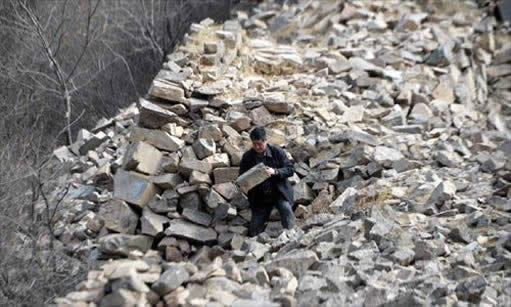
Not without opposition from his family, Xu began renovating and rebuilding the wall sections on the mountaintop by employing the fellow villagers. Xu tried to restore the Great Wall to its original appearance, through using bricks the same size of the old ones.
一开始许国华遭到了家人的反对,但是他下定决心,从山顶开始翻新、重建受损的墙体。他雇佣村里的老乡一起工作,用一样大小的砖头来修复墙体,以求最大限度地恢复长城的原貌。
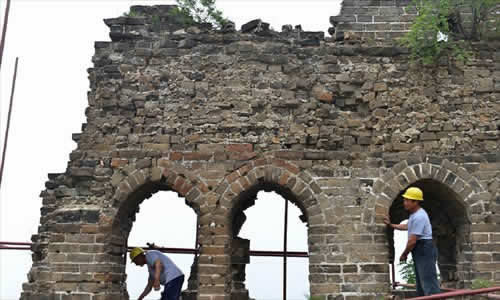
As of now, more than 100 million yuan (15.5 million dollars) has been spent rebuilding the Great Wall and construction of tourist infrastructure in Banchangyu. As a result, every year it attracts thousands of visitors.
截止目前,许国华已经投入了超过1亿元人民币(约合1150万美元)到长城修复工作和板厂峪村旅游基础设施建设中去。而现在,每年都有数千名游客慕名而来。
As workers experimented with means of building the wall, Xu said he believed they have figured out the mystery of what methods people in ancient times adopted. Unlike his previous thought that Ming Dynasty workers transported bricks on cattle, Xu said his experiments proved this was impossible. The workers cut the base stones into smaller pieces to be passed one by one to the mountaintop. It took 1,000 workers to put one stone in place.
当工人们实验建筑方法的时候,许国华说他相信他们已经找到了古人修建长城的秘密。他最开始认为,明朝的工人们用畜力运输砖块,但工人们的实验证明那是不可能的。他们把修建地基的石头切割成较小的石块,然后由人接力把石块传递到山顶上去。用人接力运输石块到山顶需要1000个工人。
As the renovations in different historic periods adopted different techniques, Xu said he was almost certain that this section of Great Wall has been renovated at least twice.
在不同的历史时期里,长城翻新工作所使用的技术也是不同的,从这一点上推论,许国华说他几乎可以确定板厂峪村境内的长城已经至少被翻修过2次。
Over the process of rebuilding the Great Wall, Xu and his workers made archeological discoveries, including hundred year-old kilns and spotted hyena fossils, a species that has become extinct in Asia.
有意思的是,在长城的重建修复过程中,许国华和工人们还有一些考古发现。他们发现了几座有数百年历史的古窑,还有一些已经在亚洲绝迹了的斑鬣狗的化石。
























